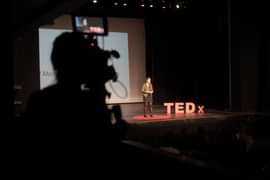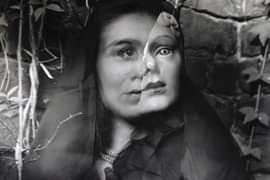March 24, 2020
Andover’s role in the Hawaii Mission
As missionaries spread Christianity around the world, some cultures lost a part of their heritageby Katie Fiermonti
In 1812, as a fledgling United States was engaged in a war with Great Britain, a student at the Andover Theological Seminary, located on the Phillips Academy campus, had his mind on other matters. The young man’s name was ‘Ōpūkaha‘ia—known by his English-speaking friends as Henry Obookiah—and despite his studious nature, he was not focused on his studies.
“He was seen one morning very early with a rule measuring the College buildings and fences. He was asked why he did it. He smiled, and said, ‘So that I shall know how to build when I go back to Owhyhee [Hawaii].’”
This anecdote is noted in Memoirs of Henry Obookiah, an edited collection of journal entries and letters published after his death in 1818. The Hawaiian’s incredible life story is cited as the impetus for missionaries—many of them with connections to the seminary—to undertake the historic 1819 journey that brought New England Protestantism to Hawaii, changing the islands forever.
Ōpūkaha‘ia’s short life (he died at age 26) and the echoing implications of the missionaries’ evangelism, was examined at the Academy this past fall during a week-long series of panel discussions, class work, and performances, including “The Life of ‘Ōpūkaha‘ia,” a one-man stage production by writer and actor Moses Goods.
Considering this often-overlooked history—as well as that of a culture not always fully represented in the historical narrative—was especially important this year as PA focuses on the theme of justice. Who tells our stories? What perspectives have been ignored? What can we learn for our future as we discover our past?
These are the questions that English instructor Corrie Martin—who is Hawaii-born and raised—and Andover archivist Paige Roberts had in mind when they organized the campus events this past fall. This part of Andover’s history, says Martin, “entangles the school directly in the cultural domination and overthrow of the independent nation of Hawaii by New England–based Christian missionaries and their descendants. We wanted to give our students—and the campus community at large—the opportunity to learn about the many facets of this history, and to wrestle with the difficult questions that come with it.”
The Aloha State lies more than 5,000 miles from Andover, Mass.—a mere plane ride today, but a nearly unfathomable distance more than 200 years ago.
In 1796, ‘Ōpūkaha‘ia fled from the Hawaiian King Kamehameha, who was attempting to establish control over the islands. ‘Ōpūkaha‘ia’s memoirs detail the murder of his parents and his desperate escape through the forests of Hilo while carrying his infant brother on his back. As he fled, a warrior threw a spear and killed the baby.
Orphaned and with few options, ‘Ōpūkaha‘ia boarded the Triumph, a ship headed to America. During the trip, he met Russell Hubbard, a devout Christian who took ‘Ōpūkaha‘ia under his wing, taught him the English alphabet, and later secured a spot for the boy at Yale. Fourteen years later, through the patronage of several men impressed with ‘Ōpūkaha‘ia’s appetite for learning and devotion to Christianity, he came to the Andover Theological Seminary.
History is the stories we’ve told about people and places, but some things are lost, for a variety of reasons. We need to remember that and learn from it.
”“Here my wicked heart began to see a little about the divine things; but the more I see to it, the more it appear[s] to be impenetrability,” wrote the studious young man.
By his account, ‘Ōpūkaha‘ia enjoyed his two years at the seminary. “I took much satisfaction in conversing with many students in the Institution,” he wrote. “I spent a little time with some of them, and in going to one room and to another to recite to them: for I was taken under their care.”
Soon, ‘Ōpūkaha‘ia began to dream of returning home and bringing American Protestantism to Hawaii. On December 15, 1812, he wrote to a friend: “I hope the Lord will send the gospel to the heathen land where the words of the Saviour never yet had been. Poor people worship the wood and stone and shark, and almost every thing their gods; the Bible is not there, and Heaven and Hell they do not know about.”
But ‘Ōpūkaha‘ia died of typhus in 1818 before realizing this dream. Soon after, his memoirs became a rallying cry for the newly established American Board of Commissioners for Foreign Missions (ABCFM). In July 1819, missionary Hiram Bingham, Andover Theological Seminary Class of 1819, wrote to the ABCFM that “the unexpected and afflictive death of Obookiah, roused my attention to the subject [of traveling to Hawaii]….I became more deeply interested than before in that cause for which he desired to live...”
Bingham wasn’t the only one inspired. Later that year, the first missionary ship set sail from New England for the Kingdom of Hawaii, and for the next 40 years the native Hawaiian royalty permitted Christians to proselytize. Working closely together, the Hawaiians and missionaries instituted a written form of the Hawaiian language, spread literacy, and established a constitutional monarchy. By 1843, the Kingdom of Hawaii was among the most literate and progressively democratic of all the nations in the world.
Some of the missionaries would eventually be honored with a plaque on Andover’s Missionary Rock, a monument to their efforts located on the periphery of Rabbit Pond. ‘Ōpūkaha‘ia’s name is not included.
History is fickle, presenting to current and future generations the perceptions of a few. With that in mind, those involved in campus discussions this past fall considered many of the missing pieces of information related to the Hawaii Mission and the life of ‘Ōpūkaha‘ia with the hope of gaining a deeper understanding of the past.
Elizabeth Pope, archivist of the Hawaiian Collections at Worcester’s American Antiquarian Society, discussed how missionaries took the profits from ‘Ōpūkaha‘ia’s memoirs and bought a printing press to bring to Hawaii. In creating the first alphabet for the Hawaiian language, they also adapted the Hawaiian language to suit the printing press; five consonants were eliminated. “They didn’t have enough accented letters for their press,” says Pope.
PA instructor in philosophy and religious studies Anaïs Garvanian welcomed Neal Hitch and Po’ai Lincoln, from the Hawaii Mission Houses Historic Site and Archives, to two of her classes to complement the campus discussions. “These themes and issues of justice, they’re not black and white,” says Garvanian. “But talking about it is good. This is simply true that this is our past.”
Garvanian says that for Hitch and Lincoln, there is a sense of justice by coming to the place where the Hawaii missionary effort was sparked 200 years ago. “It’s not like coming home, per se, but finally coming to the source.”
Though ‘Ōpūkaha‘ia never returned to Hawaii to carry out his dream, his words were used by those who took up his cause. And as more of the history is revealed, more is understood about what was gained, and what was lost.
For his part, actor Moses Goods is now championing greater Hawaiian representation in the performing arts and a greater understanding of our collective past by portraying ‘Ōpūkaha‘ia onstage and providing an opportunity for a fuller understanding of Hawaii’s history.
“Our stories continue to be appropriated,” says Goods. “I need the young Hawaiians in the audience to see themselves on the stage. I’m a Hawaiian telling Hawaiian stories, and the fact that I’m telling our stories is justice.”





